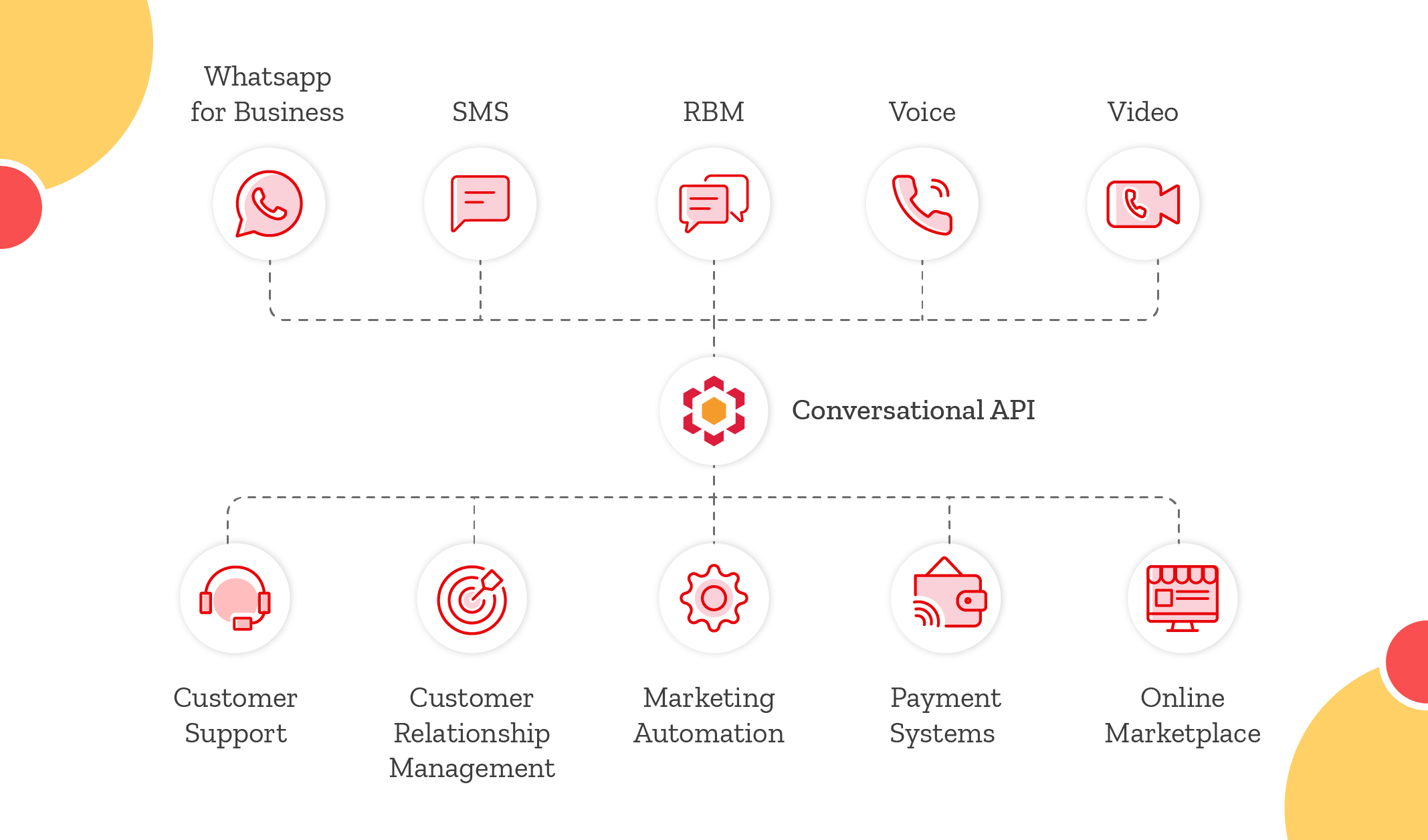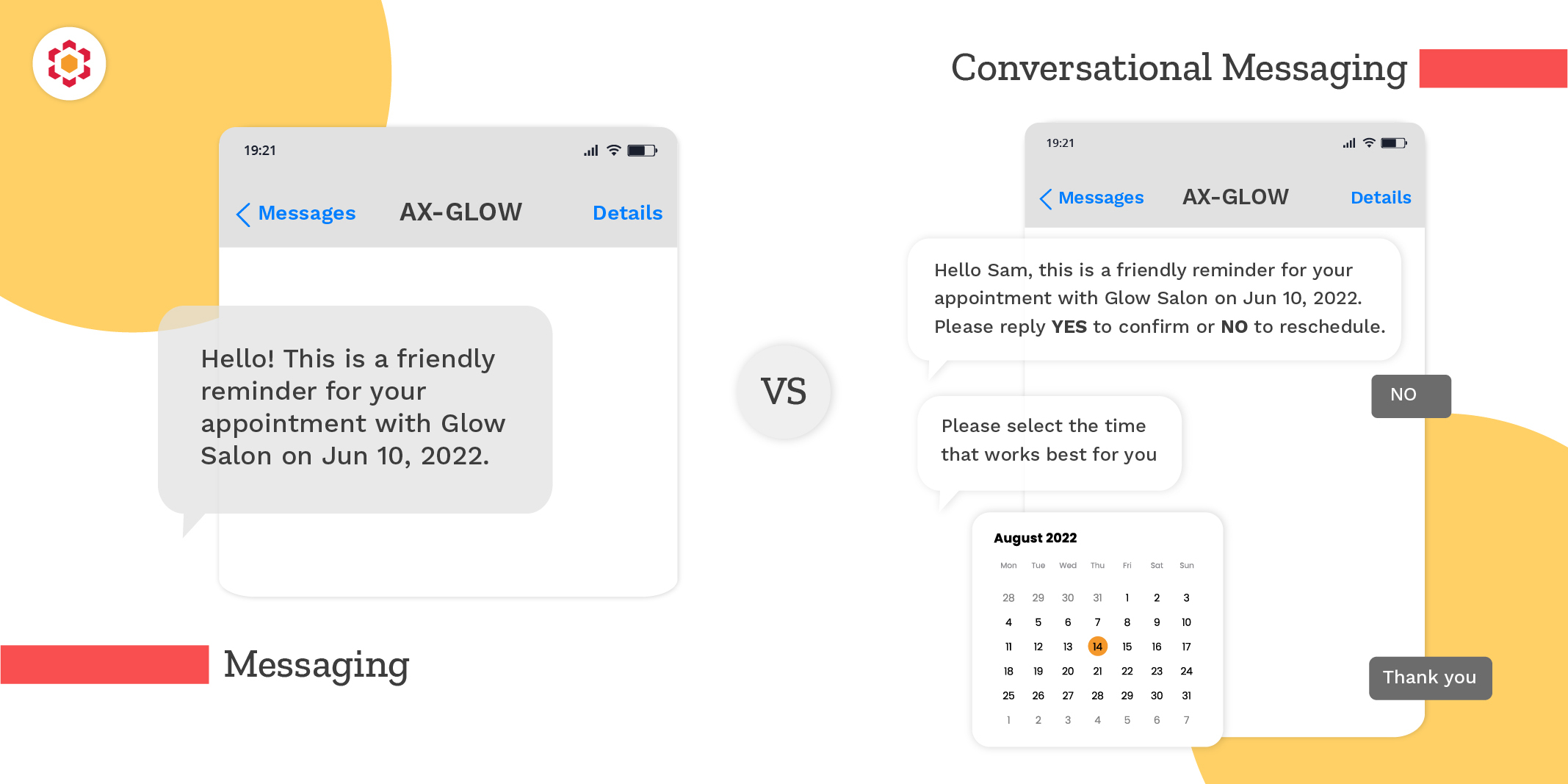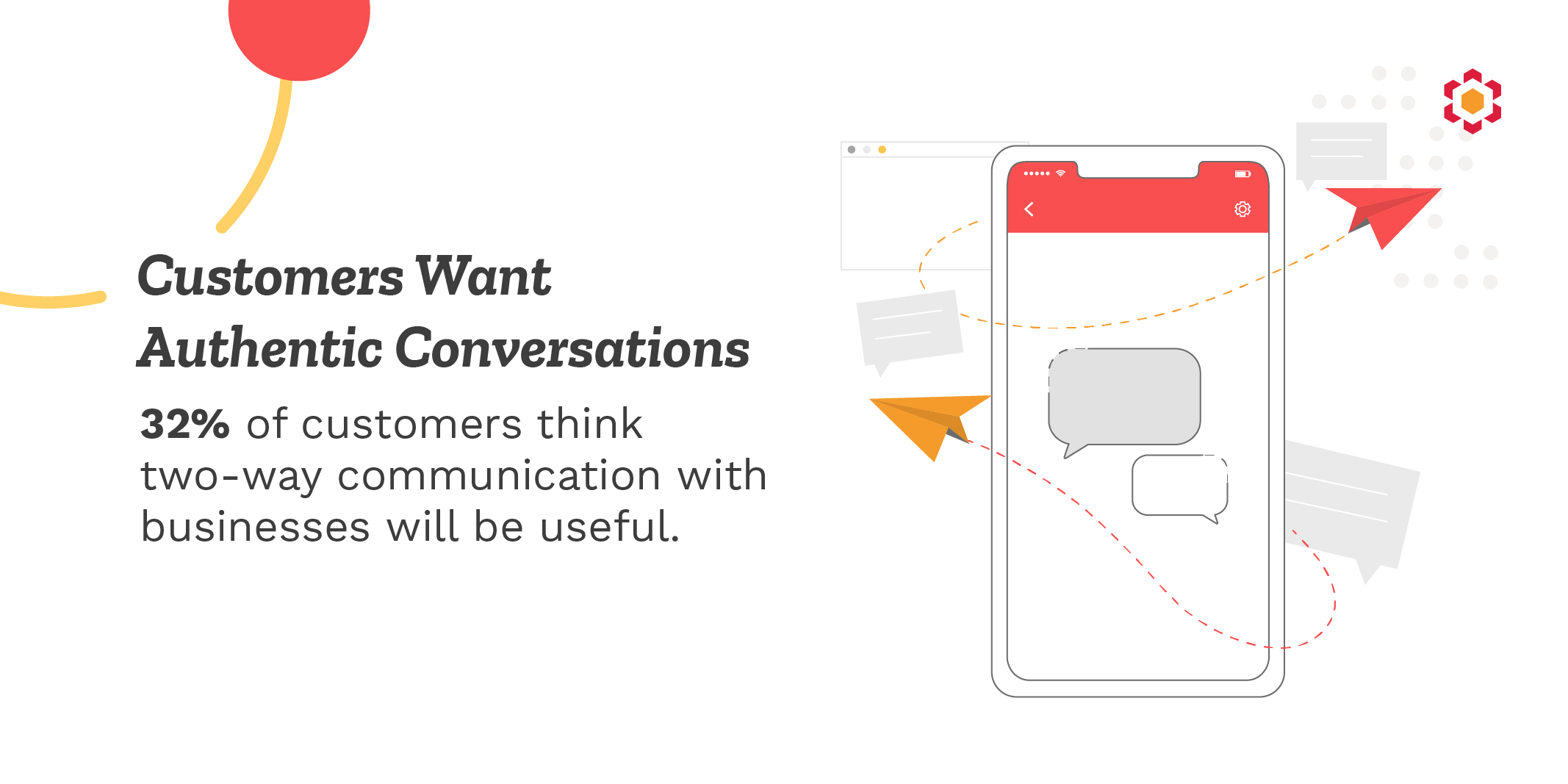6 min read
Implement Conversational Messaging to Transform Your CX Strategy
Brands are waking up to the fact that uninspired business messaging strategies can result in dissatisfied customers and fragile brand loyalties. Sending sporadic messages and keeping fingers crossed will no longer be enough to earn customer trust. Conversational messaging ensures that customers have meaningful interactions that are relevant and personalized. Let’s see how brands can transform their CX strategy and boost sales with conversational text messaging.

What is Conversational Messaging?
Conversational messaging refers to the concept of ongoing two-way dialog with customers throughout their buying journey. It facilitates and prioritizes exchanges that are purposeful and engaging.
According to Learn Hub, only 13% of businesses let customers respond to SMS. Moreover, Simple Texting survey shows that 32% of customers think two-way communication with businesses will be useful. Conversational channels allow real-time conversations and provide reliable and accurate information based on past exchanges. For example, customers who want to return an item at the store can benefit from relevant responses such as nearby stores based on their location and order history.
With multiple messaging channels being used nowadays, an omnichannel approach allows businesses to engage customers in their preferred channels effectively. Conversational texting gives businesses a holistic view of customer interactions across channels, leading to more accurate responses and improved engagement.
Some of the widely used conversational channels include:
- WhatsApp for Business
- SMS and RCS
- Voice, In-App Chat, and Video Call
- Social Media

Combat Message Fatigue
According to a Sendoso report, 80% of B2B marketers and CX strategists found that their audiences were fatigued by the rise in virtual engagement efforts. Customers are bombarded with marketing messages, including mobile notifications and ads, causing communication overload. Customers may have learned to cope with this phenomenon by ignoring generic mass messages. Therefore, businesses cannot afford to provide ineffective or inaccurate responses anymore, especially while dealing with huge volumes of messages.
Conversational customer engagement enables businesses to leverage enterprise communications services and ensure efficient customer interactions at scale. They provide APIs with which you can easily integrate customer service tools or automated chatbots. They can also integrate with payment systems for a seamless payment experience in the e-commerce and virtual healthcare sectors.
Boring text-only messaging may be underwhelming for modern customers who have short attention spans. Conversational API allows rich messages through various media formats such as interactive buttons and structured cards for improved engagement. Have an upcoming sale you want customers to be excited about? Say it with a GIF! Want customers to open your notifications? Add emojis to make your brand relatable. Other media formats such as videos are handy for how-tos that explain product features and functionality. Moreover, interactive carousels offer an engaging way for customers to explore products.

Benefits of Conversational Text Messaging
Deploying conversational text messaging offers several benefits to businesses, including the following –
Keep the Line of Communication Open
Business communication is no longer bound by business hours. A customer-centric approach means that customers can reach you and get critical information when it’s convenient for them. Automation in conversational platforms enables businesses to address customer queries promptly and efficiently. For example, a customer who enquired about the sale the previous week may be more likely to make a purchase on receiving a timely WhatsApp or SMS notification about the midnight sale. Conversational texting, thus, allows customers to dictate the pace of the conversation and have more control over their interactions with businesses.
For interactions that span several days, conversational business texting is an excellent way to ensure that customers don’t feel forgotten. For instance, a customer who requested help opening a savings account may respond positively to a reminder a week later. This may result in them proceeding to make transactions with the support of an agent.
Make Interactions Personal
Conversational AI platforms enable personalized conversations that customers can easily relate to. Addressing customers by name and mentioning information learned from previous exchanges leads to improved customer satisfaction. For example, with WhatsApp commerce, a customer who recently purchased a phone would receive notifications about price drops of phone accessories such as headphones and cases. Making suggestions like these leads to interactions that are relevant to the customer, resulting in increased sales.
Conversation platforms also store valuable information on behavior patterns, allowing businesses to send the right message at the right time. For instance, for customers who make repeat purchases, letting them know about a loyalty program can improve retention. For customers who are already members, however, an exclusive first peek at new arrivals may result in repeat purchases.
Streamline Customer Care
Thanks to data from messaging platforms, businesses can be better prepared for seasonal peaks and drops in customer queries. Conversational customer service is essential to retention, and brands cannot drop the ball by failing to engage customers in peak seasons. Enterprise businesses currently in the middle of digital transformation can leverage conversational platforms without making steep investments in infrastructure. This means businesses can still provide excellent customer service with fewer support agents even in high-demand periods.
Messaging, unlike calls, can be done concurrently, allowing businesses to handle high volumes of customer inquiries with ease. Chatbot workflows can be created for repetitive questions, so customers get prompt responses without adding to the workload of support agents.
Gain a 360 Degree Customer View
Understanding customers is key to devising an optimal CX strategy. In addition to enabling business communication that revolves around customer needs, conversation platforms can also offer valuable insights into customer attitudes and pain points. These analytics enable businesses to offer a positive brand experience and foster long-term customer relationships.
With a holistic understanding of customers, reach can be expanded on several platforms without compromising quality. In addition, a unified view of all communications paves the way for a deeper understanding of customer needs.
Customer feedback on products and communications can easily be collected with conversational channels, which can help identify potential communication gaps and help brainstorm possible solutions.

Better ROI through Meaningful Conversations
Businesses that make customers feel heard and valued win big on customer loyalty. Marketing communication has seen a significant shift with customers responding positively to channels that allow rich messaging and are convenient to use. According to a Juniper forecast, users of Rich Communication Services (RCS) messaging will reach 3.9 billion by 2025. This, in addition to reported click-through rates of 20 to 35% for SMS, makes conversational text messaging a great way to boost your ROI.
Employing multiple channels such as Whatsapp, SMS, and RCS allows businesses to activate messaging channels based on current business priorities and customer preferences. In addition, conversational API enables businesses to ascertain the performance of new channels and analyze customer behaviors effortlessly.
An overdependence on automation can make your communication monotonous. Conversational messaging platforms such as Kaleyra allow you to work out a CX strategy that involves human agents in addition to self-service and automation tools. These platforms empower businesses to improve their productivity and ROI through intuitive messaging solutions, while bringing customers closer.
Kalaivani Narayanan
Content Specialist
